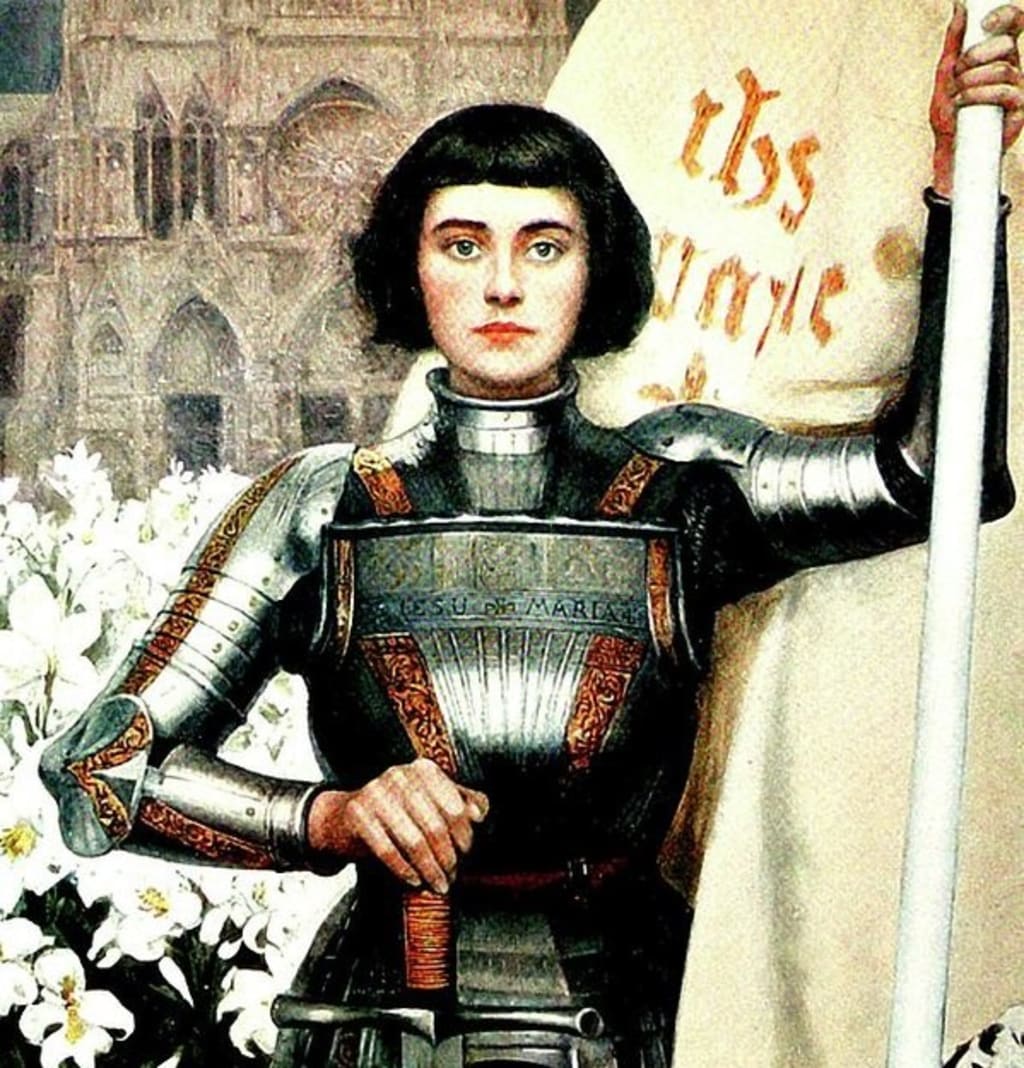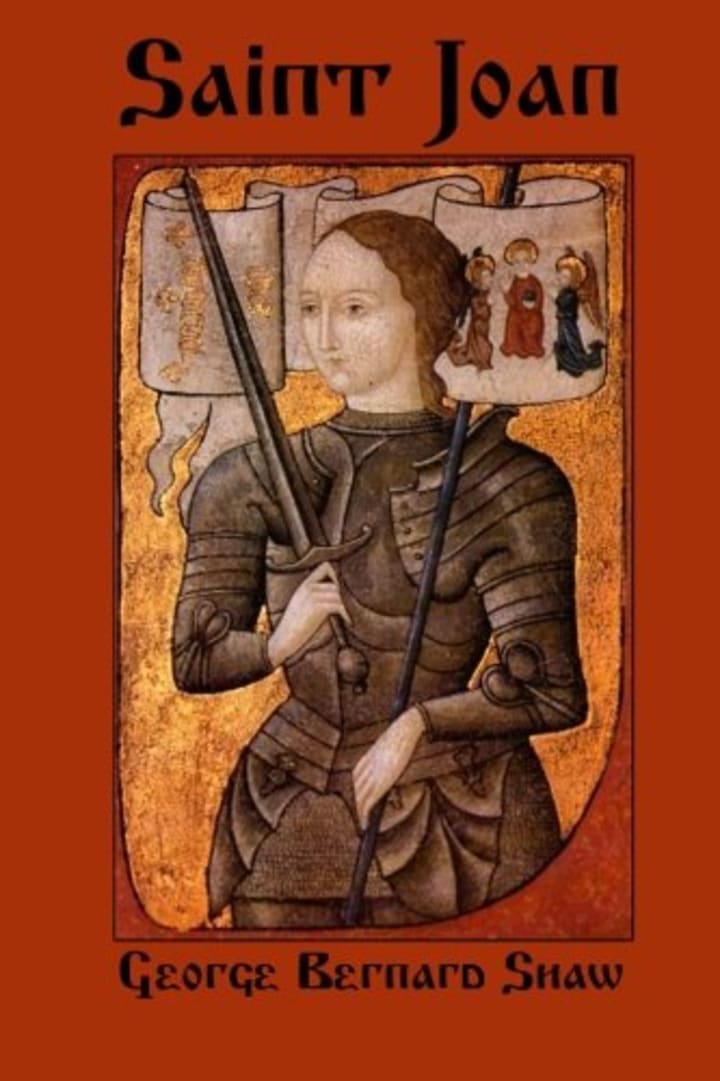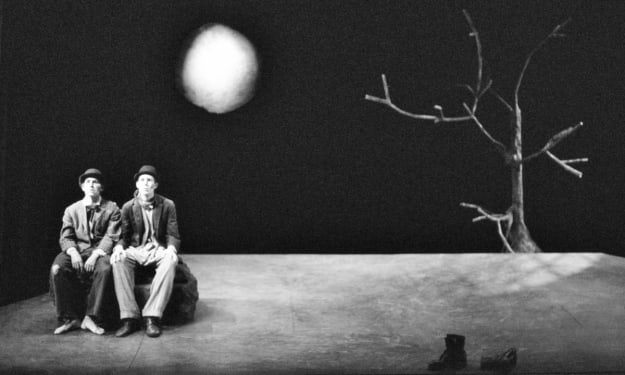Redefining Joan of Arc
Bernard Shaw's Complex Portrait in "Saint Joan"

In the grand tapestry of human history, few figures shine as brightly, yet remain as mysterious, as Joan of Arc. A heroic legend, a faith-driven warrior, she has captivated hearts and minds for centuries, transcending time's barriers. Bernard Shaw's play "Saint Joan," set in 1929 and the transformative year of 1431, invites us to rethink our view of this iconic historical figure. By putting aside common narratives, Shaw weaves a complex and nuanced story that encourages us to see Joan in a new light.
Joan, known as Saint Joan, Joan of Arc, or the Maid, emerges from Shaw's story as a multi-dimensional character, not just a simple archetype. At first glance, she seems paradoxical: an uneducated yet remarkably clever young woman. Shaw's Joan is a blend of contradictions, showing both intelligence and innocence, humility and confidence. It's these contrasting qualities that set Joan apart from ordinary people and place her in the realm of history. Her natural leadership stirs a dormant spirit in those around her, sparking a rebellion against the English rulers. This courage to defy norms marks a significant departure from the usual submissive role assigned to women in her time.
Examples from "Saint Joan" vividly illustrate this complexity. Joan's ability to navigate military strategy and her shrewd interactions with military commanders highlight her intelligence and strategic thinking, despite her lack of formal education. Her unwavering faith, depicted through her conversations with the saints she claims to hear, shows her innocence and connection to something beyond the physical world. Additionally, her interactions with the Church officials, particularly in the trial scenes, reveal her humility and determination to stand firm in her beliefs.

Yet, Shaw doesn't portray her as flawless. Joan's unwavering determination also brings stubbornness that shapes both her successes and struggles. This stubborn side, seldom shown in traditional stories, propels her to triumph but also causes conflicts among her peers. Through these contrasts, Shaw encourages us to see Joan as a fully human and relatable individual.
However, what truly sets Shaw's depiction of Joan apart is his exploration of her unconventional choices, like wearing male clothing. This seemingly small decision goes beyond fashion; it symbolizes Joan's resistance against societal norms. Dressed as a man, she embarks on a journey of remarkable audacity, challenging gender roles in a way that history rarely records. Her clothing becomes a symbol of her strong spirit and commitment to breaking boundaries. Beyond practical reasons, this choice reflects Joan's essence, showing her unyielding dedication to her mission.
Examples from "Saint Joan" showcase the impact of Joan's attire on the people around her. Her male clothing commands attention and respect, allowing her to be taken seriously in the male-dominated military context. This choice becomes a representation of her determination and her willingness to defy expectations for the sake of her mission.
Joan's victory in liberating Orleans in 1929 proves her indomitable spirit. It becomes a pivotal moment echoing not only in history but in human nature. Her fearless actions strike fear in the hearts of English leaders, leading to her tragic end through execution. The Church's role, represented by figures like Warwick and Cauchon, further highlights the complex web of Joan's story, revealing the intricate interplay of authority, religion, and her unwavering determination.
Shaw's work isn't just about Joan's character; it also joins the broader conversation about her legacy. Over time, scholars and writers have debated different interpretations of Joan's life, trial, and importance. Shaw tackles this challenge with care, balancing historical accuracy and his own insights. He crafts a narrative that respects historical timelines while injecting fresh viewpoints. This balance lends authenticity to the story and opens doors to new perspectives.
Shaw's portrayal of Joan as more than an uneducated peasant girl showcases his unique approach. He challenges common stereotypes surrounding her story, unveiling an intelligence that goes beyond formal education. Shaw takes a bold step in reinterpreting Joan's visions and voices, revealing them as products of inspiration and imagination, not signs of madness. This challenges past views and emphasizes critical thinking when looking at historical events.
But Shaw's narrative goes beyond historical accuracy. He delves into the complexities of Joan's faith, contrasting her Catholicism with her role as the first female Protestant martyr. This tension between her faith and her non-traditional path in a male-dominated society offers a fascinating perspective. Shaw's exploration of Joan's supposed connection with the divine, along with her ability to hear voices, adds an air of mystery to her character. He suggests that these aspects, rather than just making her holy, might have caused discomfort among the male figures of her time, influencing her tragic end.
Shaw's interpretation of Joan breaks from the norm, avoiding the tendency to overly romanticize her character. In his preface, he dismantles the idealized image of Joan as a simple village girl, presenting her as a genius and a saint whose complexities require deeper understanding. Shaw's narrative criticizes how history can be simplified, missing the richness of human experience.
In conclusion, Bernard Shaw's "Saint Joan" isn't just literature; it's an invitation to explore history's complexity. Joan of Arc, the young woman who ignited hope among the oppressed, emerges as a symbol of resilience, courage, and the boundless potential of the human spirit. Shaw urges us to move beyond common narratives and embrace the intricate layers that shape Joan's legacy. In doing so, he encourages us to embark on a journey of reflection, prompting us to think about how we perceive and interpret the great figures who have shaped our history. Through "Saint Joan," Shaw hands us a key to unlock history's vault and discover the vibrant, multifaceted stories that lie within.
About the Creator
Enjoyed the story? Support the Creator.
Subscribe for free to receive all their stories in your feed. You could also pledge your support or give them a one-off tip, letting them know you appreciate their work.






Comments (1)
wow so amazing You can also join my friends and read what I have prepared for you in my post